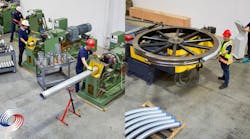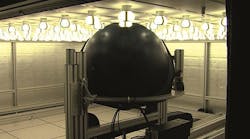The Department of Energy released an interim report on long-term testing of Philips Lighting’s L-Prize winning 60W replacement lamp showing that the lamp is holding up well beyond 40,000 hours, showing little to no significant degradation of performance in lumen maintenance or chromaticity.
The report, “L-Prize: Lumen Maintenance Testing of the Philips 60-Watt Replacement Lamp L Prize Entry” gives results of long-term testing at Pacific Northwest National Laboratories on the 200 lamps selected for the initial 8,000-hour L-Prize evaluation process and then continued, with measurements summarized at certain intervals.
A selection of those lamps passed 40,000 hours of continuous operation in July. Average lumen maintenance for those lamps was 95.6% with no failures. The DOE said that at that rate, it would take an average of 194,765 hours of continuous operation for the lamps to reach 70% lumen maintenance (L70) if no other sources of failure emerge before then.
Color has held strong as well. The average chromaticity change of the 31 lamps after 40,890 hours of operation was 0.00093 – a minuscule difference indicating that there was no detectable color shift, and that the light they emit today is indistinguishable from the light emitted four years ago.
“These results show that well-designed LED integral lamps can operate very reliably over long periods of time, with excellent lumen and chromaticity maintenance,” said the DOE site announcing the report.









